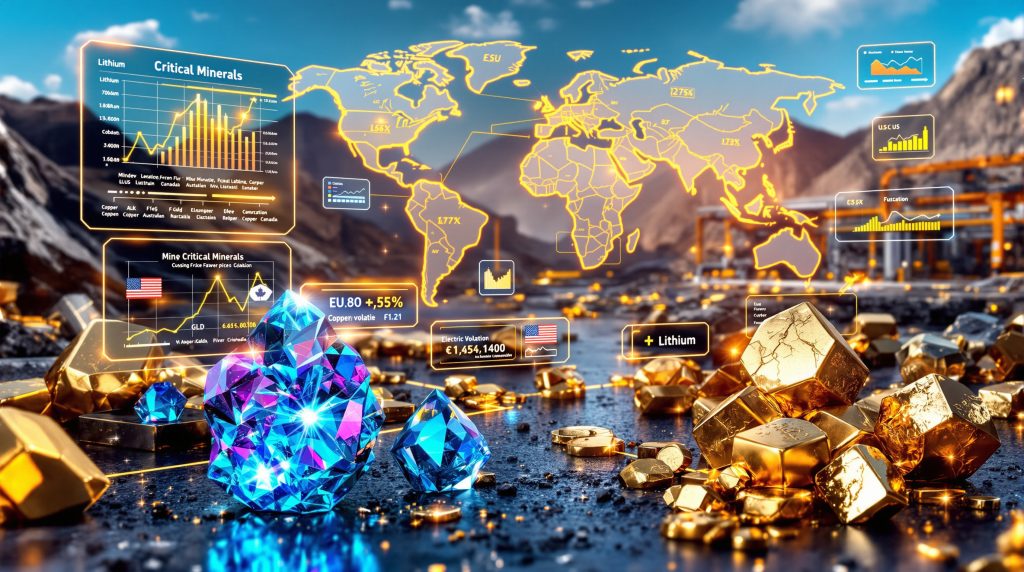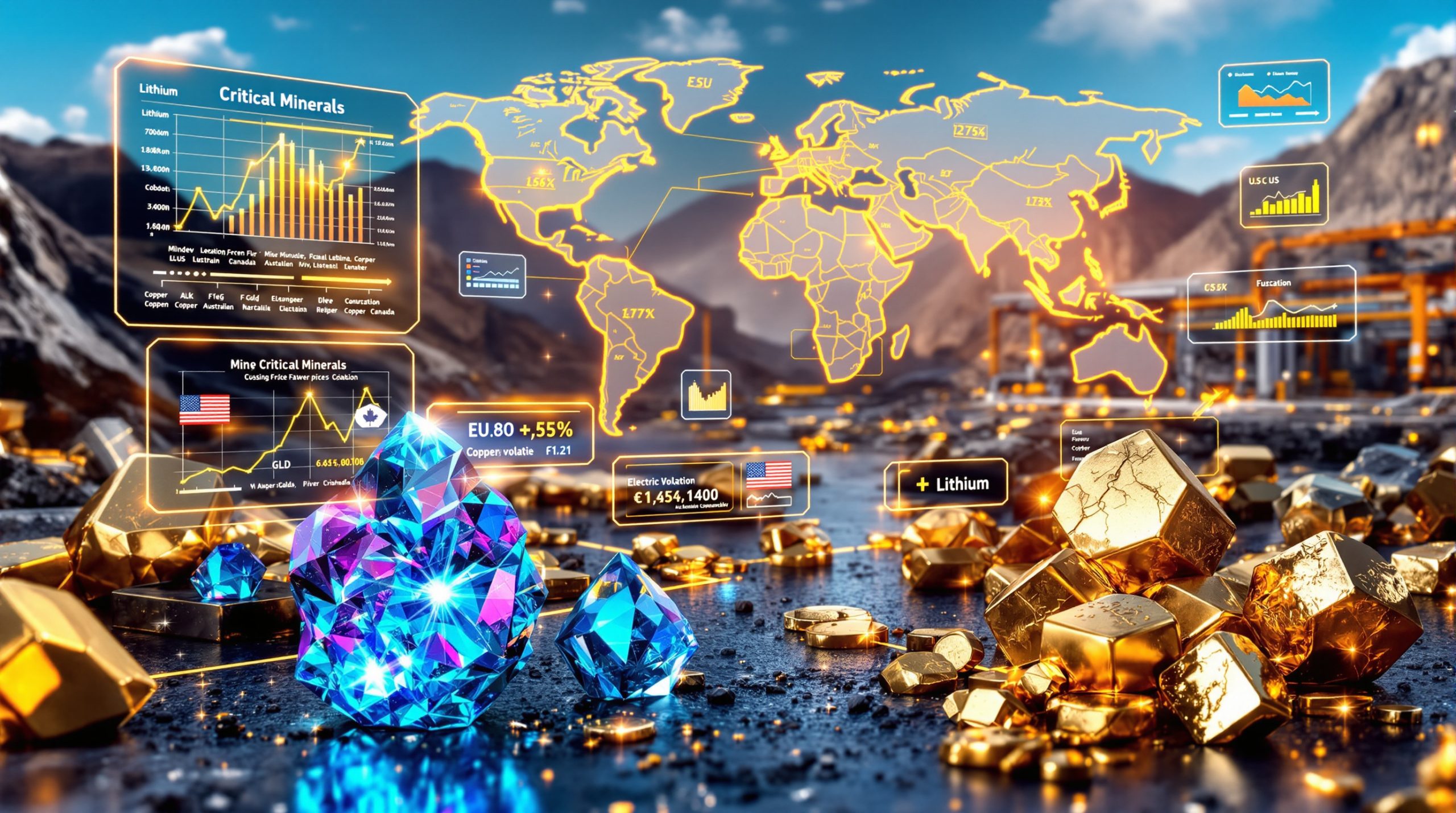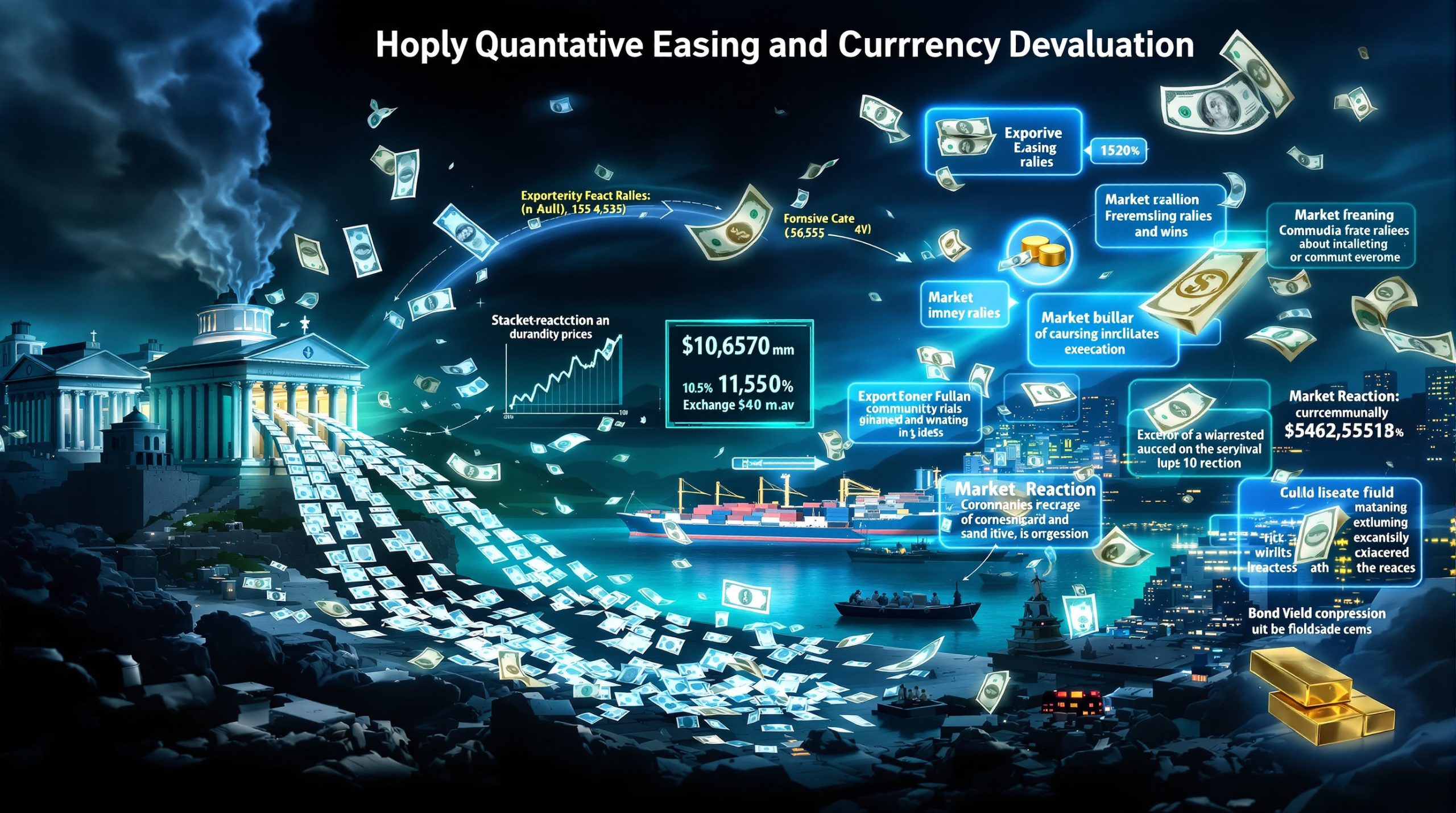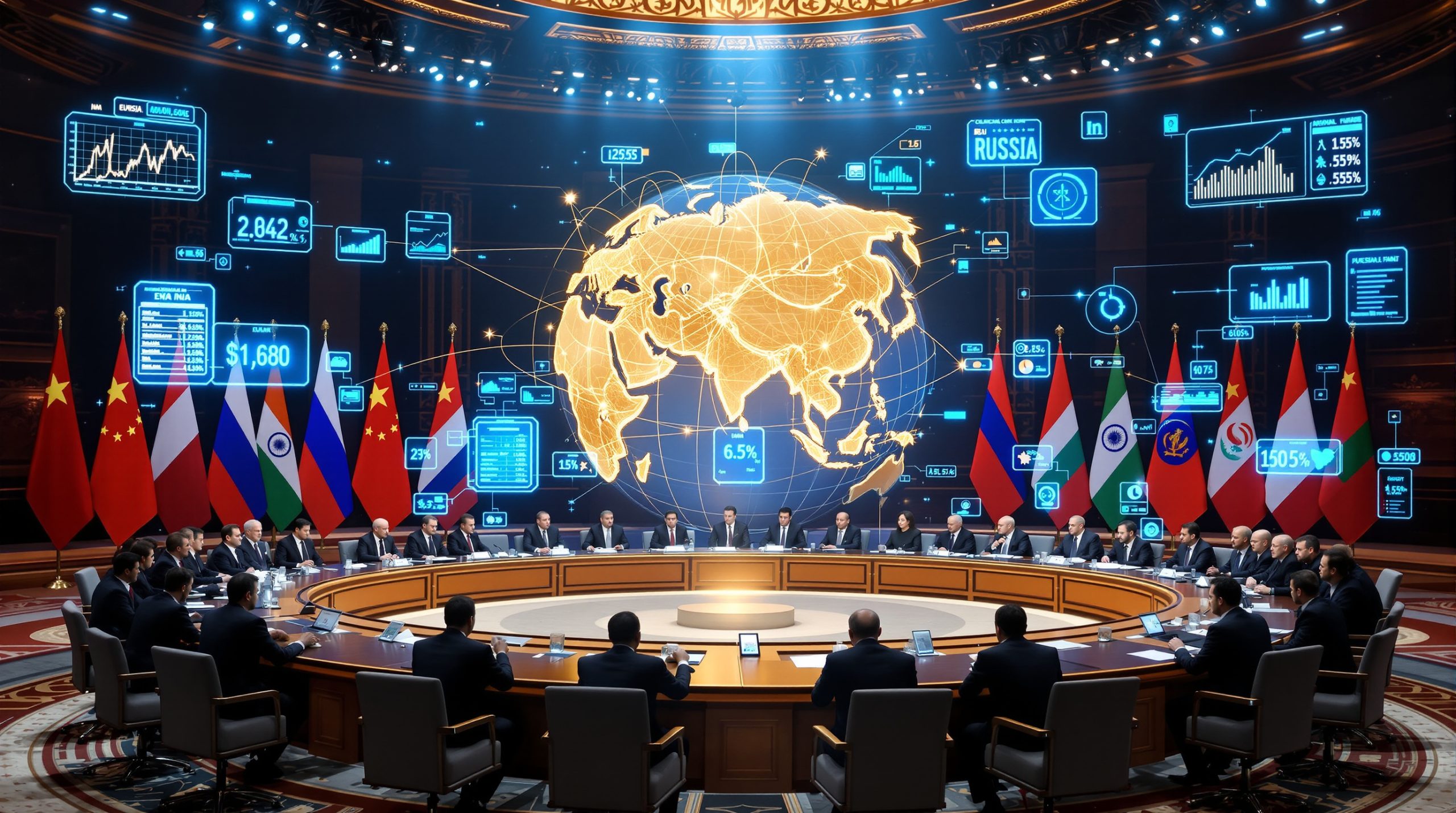Critical Minerals Investment: Strategic Opportunities in a Volatile Market
What Are Critical Minerals and Why Do They Matter?
Critical minerals represent a diverse group of raw materials essential for modern technologies, clean energy transition trends and national security. These include lithium, cobalt, rare earth elements, graphite, nickel, copper, and numerous specialized metals that form the backbone of everything from smartphones to electric vehicles and defense systems.
The significance of these minerals extends far beyond their industrial applications. They serve as the foundation for technological innovation, energy independence, and national security infrastructure in developed economies.
Key Minerals Driving the Investment Landscape
-
Battery metals: Lithium, cobalt, nickel, and graphite power the electric vehicle revolution and grid-scale energy storage
-
Rare earth elements: Neodymium, dysprosium, and praseodymium enable powerful permanent magnets crucial for wind turbines and electric motors
-
Technology metals: Copper, antimony, cesium, and manganese support digital infrastructure and specialized industrial applications
-
Industrial catalysts: Platinum group metals, vanadium, and tungsten accelerate chemical processes across multiple industries
Market Size and Growth Trajectory
The critical minerals market reached approximately $328 billion in 2024 and is projected to expand to $586 billion by 2032, representing a compound annual growth rate of 7.5%. This growth is primarily driven by accelerating demand across multiple sectors:
| Sector | Projected Annual Growth | Key Minerals Required |
|---|---|---|
| Electric Vehicles | 25-30% | Lithium, nickel, cobalt, graphite |
| Renewable Energy | 15-20% | Copper, rare earths, silicon |
| Defense Technology | 8-10% | Rare earths, titanium, beryllium |
| Digital Infrastructure | 12-15% | Copper, gallium, germanium |
Despite market volatility, industry experts consistently highlight the fundamental demand growth of 5-15% annually across critical mineral categories—creating a compelling long-term investment case despite short-term price fluctuations.
How Are Geopolitical Tensions Reshaping Critical Mineral Markets?
The critical minerals landscape is increasingly influenced by geopolitical considerations, creating both risks and opportunities for investors.
Supply Chain Vulnerabilities and National Responses
Current global supply chains for critical minerals reveal significant concentration risks:
- 70-90% of rare earth processing capacity is located in China
- Over 60% of cobalt originates from the Democratic Republic of Congo
- Indonesia controls approximately 30% of global nickel production
These concentrations have prompted major economies to develop strategic responses to secure supply chains outside traditional channels.
Market Impact Alert: The strategic repositioning of supply chains is creating price premiums of 15-30% for materials sourced from "friendly" jurisdictions compared to global market prices.
The shift toward securing domestic or allied nation supply has fundamentally altered traditional market dynamics. As one industry expert observed, "More recently there's been a big desire for people to have supply chains that don't touch Asia or China and are more linked to the US, distorting some markets and creating opportunities in others."
Regional Supply Chain Development Initiatives
Countries are implementing various strategies to secure critical mineral supplies:
-
United States: Implementing the Defense Production Act to accelerate domestic mining and processing, including Department of Energy underwriting of domestic rare earth production at premium prices
-
European Union: Creating the European CRM facility to coordinate supply chain development across member states
-
Australia: Establishing the Critical Minerals Facilitation Office to position itself as a trusted supplier to Western markets, while also promoting lithium industry innovations through tax incentives
-
Canada: Launching the Critical Minerals Strategy with expedited mining permitting basics for priority projects
These policy shifts don't merely represent theoretical changes—they're creating tangible market distortions. For example, the antimony market has seen significant disruption after China restricted exports, creating shortage conditions and driving investor interest in Western-based strategic antimony financing projects.
What Makes Critical Minerals Uniquely Challenging for Investors?
Critical minerals present distinct investment challenges compared to traditional commodity markets, requiring specialized knowledge and risk management approaches.
Market Opacity and Price Volatility
Unlike exchange-traded commodities like gold or copper, many critical minerals lack:
-
Standardized product specifications
-
Transparent pricing mechanisms
-
Liquid futures markets for hedging
-
Established benchmarks for valuation
Industry experts highlight this fundamental challenge: "Critical minerals tend to be industrial minerals, so the product specifications are quite diverse. There's no standardization of indexes or pricing, making it a very opaque market." This opacity creates significant price volatility, as evidenced by lithium's price swings of over 400% between 2021-2023.
The absence of standardized markets creates a funding paradox—capital is essential for supply growth, yet challenging to secure due to price uncertainty. As one investment specialist noted, "In an opaque market, it's very hard for bankers and others to fund projects because they're not quite sure of the detail of the product that companies are selling, as there are no exchange-traded commodities in the critical mineral space."
Project Development Hurdles
Critical mineral projects face numerous obstacles that extend development timelines and increase capital requirements:
- Extended timelines: 7-10 years from discovery to production
- Permitting complexities: Increasing environmental scrutiny
- Technical challenges: Complex metallurgy and processing requirements
- Capital intensity: High upfront investments with uncertain returns
These challenges necessitate unique funding approaches, often requiring industry participants to "write offtakes at relatively good levels" and frequently "prepay some of those offtake funding arrangements" to enable project advancement.
Where Are the Strategic Investment Opportunities in Critical Minerals?
Despite challenges, several promising investment approaches have emerged in the critical minerals space, allowing informed investors to position strategically.
Asset Quality Premium
High-grade deposits command significant premiums in the market due to:
- Lower production costs providing buffer against price volatility
- Reduced environmental footprint
- Simplified processing requirements
- Greater flexibility in responding to changing market conditions
Investment specialists emphasize that "asset quality is very high, particularly higher grades because that typically leads to lower-cost production, giving a larger buffer to weather price volatility."
Investment Insight: Projects in the lowest quartile of the cost curve have demonstrated 40-60% higher valuation multiples compared to mid-tier producers, highlighting the market's preference for quality over scale.
Multi-Commodity Exposure
Companies with exposure to multiple critical minerals can:
- Hedge against individual commodity price cycles
- Capitalize on shifting demand patterns
- Maintain investor interest through varying market conditions
- Optimize production based on prevailing prices
The multicommodity approach offers strategic advantages in attracting investment. As one industry veteran explained: "Attracting capital through the cycle means that often you have to either be a bit lucky and be in the right commodity at the right price and get your project funded at that point, or have a multicommodity approach."
This diversification strategy allows companies to continue advancing projects during market downturns. "Often it's better to be doing things at the bottom of the cycle so that you're in a position to capitalize when markets turn," noted an experienced industry investor.
Strategic Positioning in the Supply Chain
Opportunities exist across the entire value chain:
-
Upstream exploration and mining: High-risk, high-reward potential
-
Midstream processing and refining: Addressing crucial supply chain bottlenecks
-
Downstream integration: Securing offtake agreements with end-users
-
Recycling and circular economy: Reducing dependency on primary production
The most resilient business models often integrate multiple stages of the value chain, creating natural hedges against price volatility while capturing margin at multiple points.
How Is Capital Flowing Into the Critical Minerals Sector?
The investment landscape for critical minerals is evolving rapidly, with distinct patterns emerging across different funding sources.
Public Markets and ASX-Listed Juniors
The Australian Securities Exchange (ASX) has become a significant hub for critical minerals investment, with several distinct trends emerging:
- Gold producers continue to attract capital with relative ease due to the metal's safe-haven status
- Copper exploration companies are seeing renewed interest as the metal reaches price highs
- Lithium developers are experiencing a "mini-renaissance" after a prolonged downturn
- Niche commodities like antimony and cesium are gaining attention as supply constraints emerge
As one market participant observed: "It wouldn't say it's easy at the moment unless you're a gold producer of course. Gold's a very hot commodity for obvious reasons. There are green shoots though in other areas of the market as well."
Strategic Industry Investment
End-users are increasingly securing their supply chains through:
- Direct equity investments in mining companies
- Prepayment arrangements for future production
- Long-term offtake agreements at premium prices
- Joint ventures for processing facilities
The growing industry involvement reflects a fundamental shift in thinking about supply security. Companies are increasingly willing to pay premium prices to ensure reliable access to materials outside of traditional supply channels.
Government Funding Initiatives
Public sector capital is flowing into the sector through:
- Direct investments in strategic projects
- Loan guarantees and financing facilities
- Tax incentives for domestic production
- Research and development grants for processing technologies
These government initiatives reflect the growing recognition of critical minerals as strategic assets rather than mere industrial commodities, creating unique investment opportunities for companies positioned to benefit from national priorities.
What Are the Key Factors for Successful Critical Mineral Investments?
Successful investments in the critical minerals space typically share several common characteristics that distinguish them from less resilient competitors.
Management Experience Through Market Cycles
Teams with proven track records demonstrate:
-
Discipline in capital allocation during downturns
-
Ability to advance projects counter-cyclically
-
Experience in navigating regulatory complexities
-
Success in securing financing through various market conditions
Investment specialists emphasize seeking "strong management teams and strong boards with history and experience in managing companies through cycles," as this expertise can be the difference between survival and failure during inevitable market downturns.
Cost Structure Resilience
Companies positioned to weather market volatility typically maintain:
- Conservative balance sheets with limited leverage
- Scalable development plans that can be adjusted to market conditions
- Efficient corporate structures with minimal overhead
- Strategic cash reserves to fund operations through downturns
Industry experts highlight the importance of "companies with good and frugal cost bases so they can weather downturns and companies that take the right actions to reduce cost during downturns rather than just diluting investors."
Strategic Partnerships and Offtake Agreements
Securing end-user relationships provides crucial advantages:
- Potential for prepayment financing
- Price stability through long-term contracts
- Technical collaboration on product specifications
- Pathway to market for specialized products
These relationships have become increasingly important in the critical minerals sector, where standard market mechanisms often fail to provide the pricing stability needed for project development.
How Can Investors Navigate Price Volatility in Critical Minerals?
Price volatility represents both the greatest challenge and opportunity in critical minerals investment, requiring specialized approaches to risk management.
Understanding Commodity-Specific Dynamics
Each critical mineral has unique market characteristics:
| Mineral | Market Size | Supply Concentration | Demand Drivers | Price Volatility |
|---|---|---|---|---|
| Lithium | $12-15B | Moderate | EVs, Energy Storage | Very High |
| Rare Earths | $5-7B | Very High | Permanent Magnets, Defense | High |
| Graphite | $20-25B | High | Batteries, Industrial | Moderate |
| Copper | $180-200B | Low | Electrification, Infrastructure | Moderate |
Understanding these distinctive market structures is essential for developing appropriate investment strategies and risk management approaches for each commodity.
Investment Time Horizons and Cycle Positioning
Successful investors typically:
- Maintain 3-5 year investment horizons
- Position counter-cyclically when possible
- Focus on companies that can advance during market downturns
- Diversify across multiple critical mineral exposures
As one experienced investor noted, the critical minerals space requires longer-term thinking: "We all like to stay very pure and trying to just develop good projects in any commodity at through-the-cycle prices, but the harsh reality is that investment markets tend to crowd into what's a bit hotter at that time."
This cyclical nature of investment interest creates opportunities for contrarian investors to accumulate positions during periods of market neglect, potentially reaping significant rewards when market sentiment inevitably shifts.
What Are the Emerging Trends Shaping Critical Minerals Investment?
Several key trends are likely to influence the critical minerals landscape over the coming 12-24 months, creating both risks and opportunities.
Merger and Acquisition Activity
Industry consolidation is accelerating due to:
-
Valuation disparities creating opportunities for well-capitalized players
-
Need for scale to attract institutional investment
-
Strategic positioning to secure offtake relationships
-
Complementary asset portfolios creating synergies
Industry analysts predict increased transaction activity: "I think we'll see more of that in the coming year or two, particularly as commodity markets improve, that the strong companies will probably rerate faster and that will create opportunities for them to use their relatively overpriced script to buy underperforming assets."
Niche Commodity Focus
Investor attention is increasingly turning to specialized minerals:
- Antimony (critical for fire retardants and defense applications)
- Cesium (used in specialized drilling fluids and atomic clocks)
- Gallium and germanium (semiconductor and photovoltaic applications)
- Tellurium (solar panel manufacturing)
These niche markets are experiencing supply disruptions as traditional sources become less reliable. For example, "China's now restricted supply [of antimony] and all of a sudden there's a shortage. So there's a real chase to get hold of some of the companies who are operating in these areas."
Relative Valuation Opportunities
The commodities sector appears undervalued compared to other market segments:
- Tech companies trading at historically high multiples
- Critical mineral producers at cyclically low valuations
- Potential for sector rotation as investors seek value
- Growing recognition of commodities as inflation hedges
Market observers note this valuation disparity: "The commodity sector is underappreciated relative to other parts of the market. Some of [these tech companies] are trading at multiples that just don't appear sustainable. At the same time, you've seen the complete opposite happening in the commodity markets."
This valuation gap creates potential for significant capital flows into the sector as institutional investors rebalance portfolios toward underowned commodity exposures.
How Will Policy Developments Impact Critical Minerals Investment?
Government policies will continue to significantly influence the critical minerals landscape, creating both opportunities and challenges for investors.
Evolving Regulatory Frameworks
Key policy developments to monitor include:
- Permitting reform initiatives to accelerate project development
- Strategic mineral designations that prioritize certain commodities
- Trade policies affecting cross-border mineral flows
- Environmental regulations impacting production methods
These regulatory changes can significantly alter project economics and development timelines, creating advantages for companies positioned to benefit from policy priorities.
International Cooperation Mechanisms
Collaborative approaches are emerging:
- G7 Critical Minerals Action Plan promoting supply diversification
- Bilateral agreements between consuming and producing nations
- Technology-sharing initiatives for processing innovations
- Coordinated strategic stockpiling programs
These international frameworks represent a fundamental shift in how critical minerals are viewed—less as traditional commodities and more as strategic resources essential for economic and national security.
What Questions Should Investors Ask Before Committing to Critical Minerals?
Prudent investors should consider several key questions when evaluating opportunities in this space to maximize returns while managing unique sector risks.
Project-Level Assessment
- What is the asset's position on the global cost curve?
- How complex is the metallurgy and what recovery rates can be achieved?
- What is the timeline to production and what are the key milestones?
- How robust is the project against various price scenarios?
Investors should prioritize projects with high-grade resources, as these typically translate to lower production costs and greater resilience to price volatility—a critical consideration in volatile commodity markets.
Company-Level Evaluation
- Does management have experience in bringing similar projects to production?
- What is the company's cash position relative to funding requirements?
- Are there strategic partnerships or offtake agreements in place?
- How does the company's valuation compare to peers with similar assets?
As industry experts emphasize, "having a good cash balance or the ability to raise capital is crucial" since "the oxygen for one of a better term is the capital or the cash" for development-stage mining companies.
Market-Level Considerations
- What is the supply-demand outlook for the specific minerals?
- How concentrated is production globally and what are the geopolitical risks?
- What technological developments could impact demand patterns?
- How might policy changes affect market dynamics?
Understanding these broader market factors provides essential context for evaluating individual investment opportunities within the critical minerals investment sector.
FAQ: Critical Minerals Investment
What defines a "critical" mineral?
Critical minerals are materials deemed essential for economic and national security that face supply chain vulnerabilities. Classifications vary by country but typically include minerals crucial for clean energy technologies, defense applications, and advanced manufacturing with concentrated global supply.
How do critical mineral investments compare to traditional mining investments?
Critical mineral investments typically feature higher price volatility, less market transparency, more complex processing requirements, and greater geopolitical considerations than traditional mining investments. They often require specialized knowledge of end-use markets and technical specifications.
What role do ESG considerations play in critical minerals investment?
ESG (Environmental, Social, and Governance) factors are increasingly important in critical minerals investment, with growing emphasis on responsible sourcing, reduced environmental footprints, community engagement, and transparent governance. Projects with strong ESG credentials often command premium valuations.
How can retail investors gain exposure to critical minerals?
Retail investors can access critical minerals through publicly traded mining companies, exchange-traded funds focused on battery metals or clean energy, royalty and streaming companies, and in some cases, physical metal holdings through specialized investment vehicles.
Disclaimer: This article contains general investment information and should not be construed as personalized investment advice. Commodity markets are highly volatile, and past performance is not indicative of future results. Investors should conduct their own research and consider seeking professional financial advice before making investment decisions.
Ready to Profit from the Next Major Mineral Discovery?
Stay ahead of the market with real-time alerts on significant ASX mineral discoveries through Discovery Alert's proprietary Discovery IQ model, which transforms complex mineral data into actionable investment insights. Explore why historic discoveries can generate substantial returns by visiting Discovery Alert's dedicated discoveries page and begin your 30-day free trial today.




